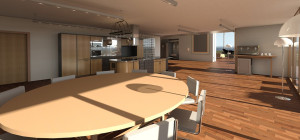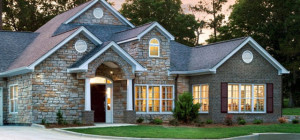 If you are thinking of moving to Spain, you may be dazzled by some unfamiliar and perhaps confusing terminology you’ll come across when looking to buy or rent property. Spain has a wealth of stunning accommodation that’s available in all shapes and sizes, and plenty of regional variations too.
If you are thinking of moving to Spain, you may be dazzled by some unfamiliar and perhaps confusing terminology you’ll come across when looking to buy or rent property. Spain has a wealth of stunning accommodation that’s available in all shapes and sizes, and plenty of regional variations too.
Apartments (apartamento or piso)
Spain has a huge selection of flats and apartments to choose from, particularly in the towns and cities and all along the coast. Much more than is the case in the UK, apartments form the backbone of the Spanish property market everywhere except in the most rural areas. Whether you’re looking for a bijou studio apartment in the middle of Malaga or a generously sized and luxuriously appointed beachfront penthouse on the Costa del Sol, you’ll be spoilt for choice.
Appartamentos are built for the holiday market (while pisos are for permanent residence). They generally don’t have central heating (although air conditioning is common) and amenities in some holiday block may not be available out of season.
The advantages of buying a Spanish apartment include low maintenance costs and good levels of security, particularly if the block has a concierge (portero). There may be communal amenities such as gardens, swimming pool or tennis courts, and nearby local facilities. They’re the perfect ‘lock and leave’ solution for holiday property investors.
Modern terraced houses (casa adosada)
Modern terraced and semi-detached properties are often found in Spanish towns and villages and on the outskirts of resorts and large towns; they’re also popular within urbanisations (see below).
These townhouses tend to be built on 2 floors, offering bright and versatile living space that may well include an additional roof terrace and basement garage. However, outdoor space is often limited to a patio garden or courtyard. There may be shared facilities, such as gardens and a pool.
Modern terraced and detached houses can be the perfect compromise between apartment living and managing a larger detached property. Maintenance is comparatively low, there’s plenty of living and storage space, and ample privacy and security. Reap all the benefits of having communal facilities in a residential community that has fewer neighbours than an apartment block.
Villas (casa, chalet, villa)
Spanish villas are substantial properties that are built for year-round living. They are upscale modern detached properties that invariably have a garden and a pool – the classic choice for many British property investors.
Spaniards don’t tend to live in detached houses, and villas are in fact difficult to find in more urban environments. However, there’s no shortage of tempting Spanish villas on the coast and in the resorts, most of them snapped up by foreign investors or used as second homes by affluent Spaniards.
Many villas, particularly those constructed recently, are part of an urbanisation or residential development, with added benefits such as membership of a gated community and having a wide range of communal facilities at your disposal.
A Spanish villa can be a dream come true. It’s a perfect place for families with children and pets with plenty of space to spread out and enjoy the Mediterranean climate. A slight disadvantage could be the out-of-town location which usually means a car is required to go anywhere. Maintenance and security issues may also need to be addressed.
Urbanisations (urbanizaciones)
These purpose built residential developments or estates are made up of a varied mixture of apartment blocks, villas and townhouses. Some are small exclusive estates, others are huge complexes – and you’ll find them around every Spanish resort and in many cities too.
Depending on size, location and levels of discernment, local facilities can range from nothing more than a local bar to luxurious shopping and entertainment complexes, with transport laid on for residents to get around.
Many urbanisations have permanent residents, others are inhabited by foreign holidaymakers and expats, and often cater for one particular nationality, e.g. German or British. Unfortunately, this means that the estate is likely to empty out when the holiday season has finished, with many communal amenities unavailable out of season.
If you’re looking to move to a tranquil, secure and agreeable area and are happy to mingle and socialise with other expats instead of Spanish people, urbanisations are definitely a good place to invest in. Experts at Bromley Estates Marbella can help you.
Country properties (cortijo, masia, casa rural, finca)
If you’re looking further inland towards the Spanish countryside and away from coastal resorts, you will come across a wealth of rural properties and country estates loosely termed fincas. Technically, a finca is a farmhouse, usually with land attached – but in ‘estate agent speak’ it could mean stone cottages or a large country home – and olive groves, citrus trees, almond blossoms and meadows are often part and parcel of the rural idyll. Not all fincas are old buildings, but if they are they’re likely to require extensive renovation. Luckily, rural Spanish property prices, though on the rise, will allow for this.
A rural life in Spain can be the most magical experience but only if you’re prepared for the isolation and the lack of practicalities that you will come across every day. It’s peaceful and quiet, but there’s no ready-made community and amenities and facilities are a long way away. As a holiday investment, think carefully how you will manage property refurbishments and maintenance in a foreign country in the middle of nowhere.







